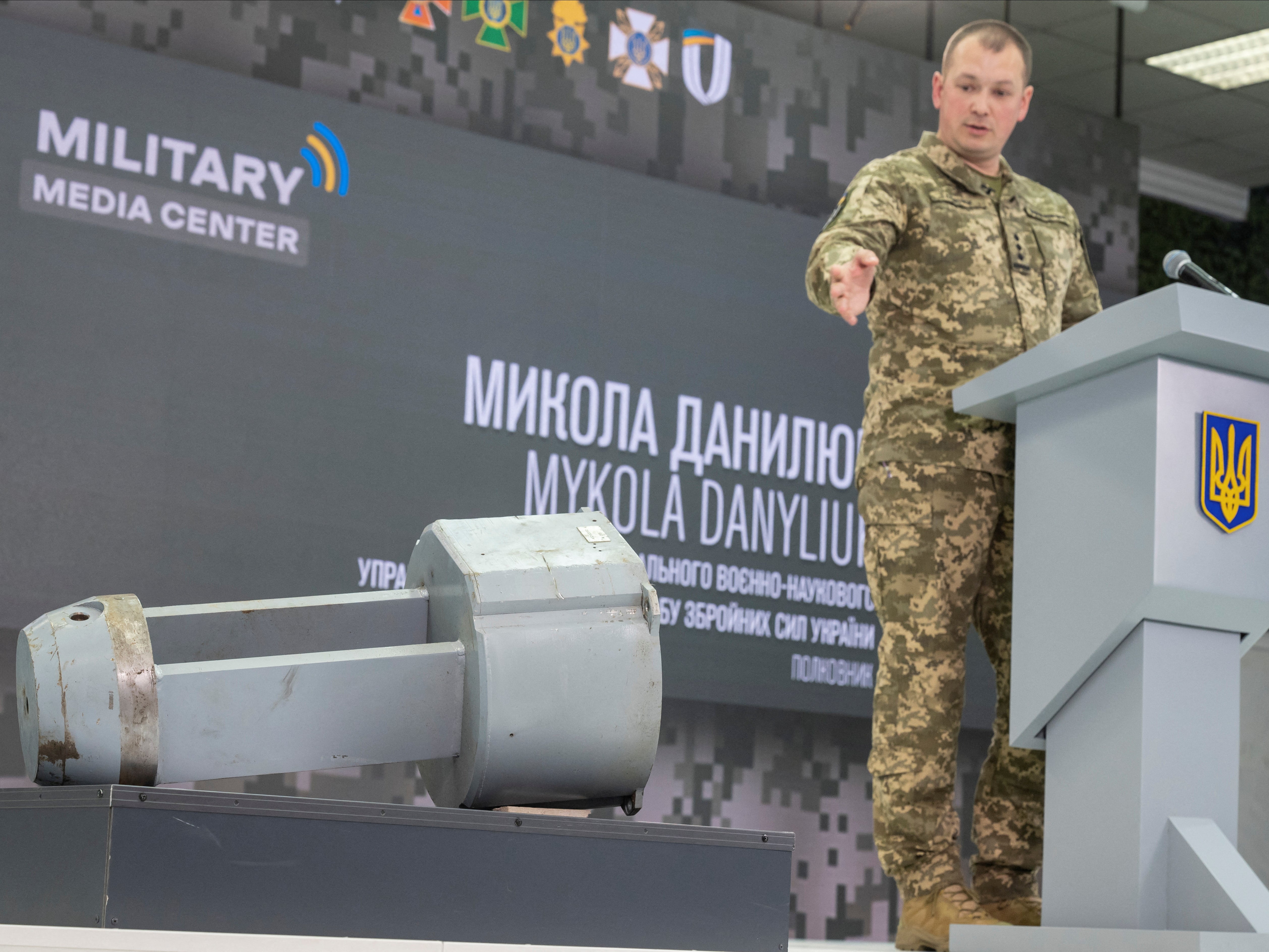Ukraine provides evidence of dummy warheads fired by Russia using nuclear-capable missile
Tests showed no abnormal levels of radioactivity on recovered missiles, Kyiv military official says
Your support helps us to tell the story
From reproductive rights to climate change to Big Tech, The Independent is on the ground when the story is developing. Whether it's investigating the financials of Elon Musk's pro-Trump PAC or producing our latest documentary, 'The A Word', which shines a light on the American women fighting for reproductive rights, we know how important it is to parse out the facts from the messaging.
At such a critical moment in US history, we need reporters on the ground. Your donation allows us to keep sending journalists to speak to both sides of the story.
The Independent is trusted by Americans across the entire political spectrum. And unlike many other quality news outlets, we choose not to lock Americans out of our reporting and analysis with paywalls. We believe quality journalism should be available to everyone, paid for by those who can afford it.
Your support makes all the difference.Ukraine has claimed to provide evidence of fragments of dummy warheads fired by Russia using nuclear-capable missiles.
Western intelligence has alleged that the move is an attempt by Vladimir Putin’s forces to exhaust Kyiv’s air defences.
The British Ministry of Defence has suggested that nine months into the war in Ukraine, Moscow’s arsenal is so “depleted” that it has resorted to replacing the nuclear warheads from ageing cruise missiles with ballast, using the unarmed munitions as “decoys”.
In its “intelligence update” last Saturday, the ministry cited open-source footage showing the wreckage of an AS-15 Kent air-launched cruise missile, designed in the 1980s exclusively as a nuclear delivery system and apparently shot down in Ukraine.
Aside from the impact caused by the speed of the missiles and the combustion of any unspent fuel, such weapons were unlikely to achieve reliable effects against Moscow’s intended targets, the UK said.
Asked about Britain’s assertion, a US military official told Pentagon reporters on Tuesday: “It’s certainly something that [Russia are] trying to do to mitigate the effects of the air defence systems that the Ukrainians are employing.”
During a news conference in Kyiv two days later, a Ukrainian military official presented what he said were fragments of these dud missiles in west Ukraine.
Mykola Danyliuk, of the Ukrainian armed forces’ research unit, said that the fragments which fell in the Lviv and Khmelnytskyi regions on 31 October had been identified as parts of Kh-55 cruise missiles, all of which had their serial numbers scratched out.
The Kh-55 was designed by the Soviet Union in the 1970s and is primarily intended to carry nuclear warheads and to be launched from bomber aircraft.
Tests on the fragments did not show abnormal levels of radioactivity, Mr Danyliuk said, adding: “This shows that there was no contact [of the missile] with nuclear elements.”
Russia’s defence ministry did not immediately respond to a request for comment.

Mr Danyliuk said the non-explosive warheads, one of which was exhibited on the stage of the briefing centre in Kyiv, were “a substitute for a thermo-nuclear guided charge”, adding: “The uniqueness of the missiles discovered was that they were equipped with a non-explosive warhead.”
Even so, the missile presented a degree of danger because of its kinetic energy and fuel, he said, adding that this had been evidenced by “the impact of a Kh-55 missile into a residential building”.
“We can state that the launch of these missiles is intended to ... distract the attention of Ukraine’s air defence system and tire it out, while modern Russian rockets ... are fired on critical infrastructure objects,” the Ukrainian official told reporters.
With progress on the frontlines in its now nine-month war stagnating, Moscow has intensified its bombardment of Ukrainian infrastructure, which have left millions without power in sub-zero conditions.
Ukrainian president Volodymyr Zelensky has labelled Moscow’s attacks “energy terrorism”, saying: “They cannot beat Ukraine on the battlefield, so they try to break our people this way.”
Russian foreign minister Sergei Lavrov claimed this week that the barrage of strikes was intended to “knock out energy facilities that allow [Nato] to keep pumping deadly weapons into Ukraine in order to kill the Russians”.
Additional reporting by Reuters




Join our commenting forum
Join thought-provoking conversations, follow other Independent readers and see their replies
0Comments